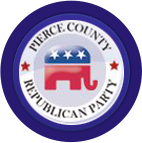Contrary to DPI, not every Educational Approach has to cost Millions of Dollars
K-12 education in Wisconsin is at a critical point. Less than half of Wisconsin students are proficient in math and reading, and state test scores have significantly declined over time. Most disturbing, Wisconsin’s racial achievement gap is the worst in the nation and has been that way for a long time.
It’s not a funding issue. We’re spending increasing billions on education. In recent years, as education funding has risen, results have not. Many parents have bemoaned to me that they do not see their taxpayer investment directly related to their children’s classrooms. Funding results have been so abysmal that Rep. John Nygren (R-Marinette) and I have called for an audit of the state’s Department of Public Instruction (DPI).
How do we boost education while also getting the best value for taxpayer dollars? That’s where many policy pieces come in, and I’ll reference one here to start, Assembly Bill (AB) 459. AB 459 is a simple bill to ensure every student learns to write in cursive. This bill is authored by the chairs of the Legislature’s Education Committees. We each have spent years examining student learning, evidence-based research, and how the brain best learns.
How can cursive help? Studies show the value of cursive writing on student brains and learning: cursive writing stimulates brain synapses and synchronicity between the right and left hemispheres in a way that printing does not. Cursive writing builds neural pathways and integrates multisensory learning, which is a key component for struggling readers. The College Board even found that students who wrote in cursive for the SAT scored higher than students who used print.
Dyslexia and dysgraphia, learning disabilities that can severely affect learning, have both shown to be aided with cursive writing.
The DPI has exaggerated the cost of this bill. What many people do not know is that state agencies commonly inflate and deflate legislative fiscal estimates based on the department’s preferred policy positions. In the case of AB 459, the DPI’s estimate does not account for the fact that many schools are currently teaching cursive, and many school districts already have the materials and training available.
Contrary to DPI, not every education initiative requires millions of dollars. We can think outside the box. Teachers can write cursive letters and words on a whiteboard and have students copy them in their notebooks. Schools can purchase curricular materials and reuse workbook pages for several years. A simple internet search provides a wealth of free materials and instruction. For younger teachers who have not personally used or been taught, scores of senior or retired teachers are available to assist with cursive training.
Beyond the nostalgia of being able to read grandparent’s letters and the Declaration of Independence, cursive writing provides the mental gymnastics to develop student brains and increase learning outcomes. And it can be done in a low-cost way. Not the millions like DPI suggests.
Rep. Jeremy Thiesfeldt (R-Fond Du Lac) represents Wisconsin Assembly District 52 and is the chairman of the state Assembly Education Committee.

